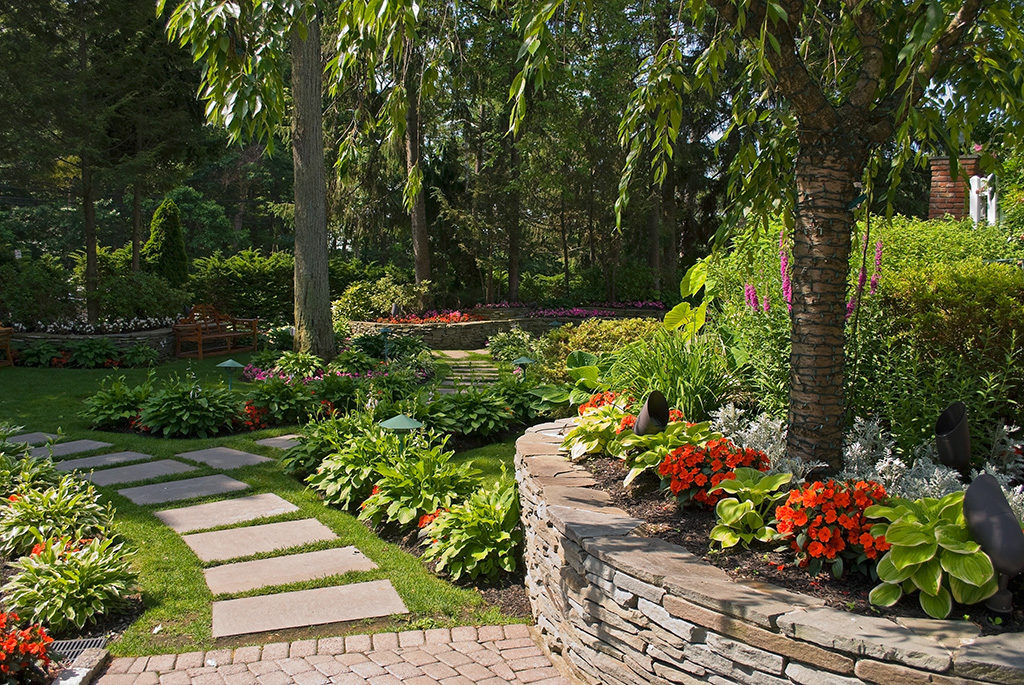

According to the U.S. Department of Energy (DOE), nearly half of all the energy you use in a typical year will go to just two actions: heating and cooling your home.
Right now, take a look at what you spent last year on energy. Now divide that amount in half. That is how much you can potentially save by reducing your indoor heating and cooling needs in other ways. And of course, every penny you save on air conditioning can go towards savings, college tuition for your kids, a great vacation or whatever you want to spend it on!
In this article, learn tips for investing in home improvement projects to beautify your lawn and garden can also shave valuable dollars and cents off your energy bills.
Tip 1: Trellis Vines.
According to the DOE, when solar energy gets absorbed through your windows and roofing, this will heat up your interior spaces just when you want them to be cool and comfy.
So how can you fix this common cause of increased cooling costs?
One of the best and fastest ways is to install a trellis structure and plant climbing vines. Unlike most people, most vines love heat and humidity, and they will grow fast and enthusiastically when given a structure to cling to. The key to success here is to select the right climbing vine for your USDA Plant Hardiness Zone.
For the best results, don’t install the trellis right against the outer structure of your home, but a few feet away. This will allow air to circulate and prevent later issues with moisture or overgrowth that may affect your home’s structural integrity.
Tip 2: Bushes and shrubs.
As the eco-friendly movement continues to gather steam, more homeowners are opting to save trees by planting bushes and shrubs that can serve as natural privacy “fences.” Not only is this great for the planet, but it is also great for your cooling bill – if you plant the bushes and shrubs in the right places and choose the right plants for your Hardiness Zone (see Tip 1 here).
The first step here is to assess your home and identify areas where overheating occurs daily. Walls, windows and pavement can all act as heat conductors when exposed to hot, direct sunlight. Strategically planting shrubs or bushes effectively blocks that hot sunlight from radiating inwards into your home and also cools the surrounding air.
Plant bushes or shrubs close together so as they grow, they form a dense barrier against the heat. Leave a few feet between the greenery and your home’s walls and foundation to avoid overgrowth, root barrier issues or moisture issues later on.
Tip 3: Trees.
There is no doubt that the canopy cover provided by trees can go a long way towards reducing your air conditioning expenses. But trees also come with their own maintenance needs, including pruning, raking, root barrier issues and other falling detritus such as seed pods, pine cones, acorns or faded flowers.
Here, it is vital to choose the trees you invest in with care. As the DOE points out, the right tree planted in the right place can lower your home’s inside air temperature by six degrees naturally! That is a lot of energy saved!
The weather in your local geographic area should also influence what kind of trees you select. Deciduous trees, which lose their leaves in winter, will let the sunlight through in winter to lower your heating bills as well. This type of tree works best in more temperate climates where the winter weather is less extreme.
Evergreen trees, on the other hand, keep their leaves all year long and can provide a windbreak barrier against extreme weather conditions, which also lowers your heating costs by reducing the wind chill factor nearest your home’s walls and foundation.
Tip 4 – Heights matter.
Finally, when choosing trees, shrubs, bushes and trellis vines, you should aim for a range of heights to gain protection from the sun at different times of day. With the right planting strategy, you can keep your home cooler naturally from morning all the way through until sunset each evening.
In winter, you can achieve the same level of home improvement by choosing the right type of greenery for your landscaping and planting it near enough to your home to provide protection but not so near it becomes its own winter weather risk.
According to the DOE’s Energy Saver Infographic, if you plan out your landscaping with careful attention to enhancing shade and interior cooling, the investment can pay for itself in as little as eight years. After that, you will continue reaping the benefits of reduced energy bills and a cooler, more comfortable indoor space.